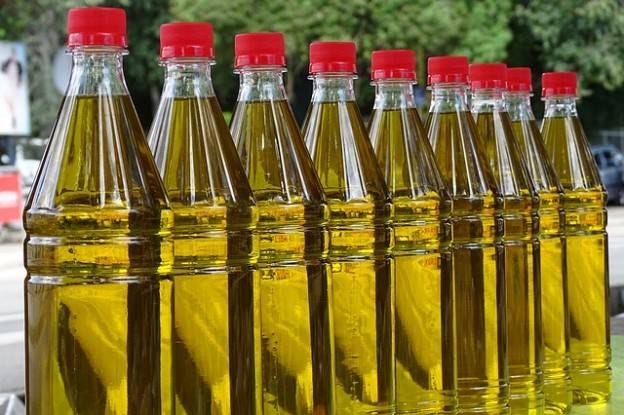Vegetable oil hydration consists in removing the phospholipids from the raw product. These lipids are of high biological value. The amount of the phospholipids in the vegetable oil ranges from 0.2 tо 4.5% and depends on the kind of the raw material and the way the vegetable oil is obtained.
When the product is first manufactured, the phospholipids are dissolved in oil but they may settle out when it is stored. The hydration method is that phospholipids connect with water and form a non-soluble substance that settle down. There may be needed from 0.5 to 6% of water in order to carry out this process.
First, water is added to the raw oil that has been previously warmed up to 45-50 ºС / 113-122 ºF. Then, this mixture is delivered to a special unit to form the hydrogenated phospholipids. At the next stage, oil is separated from sediments and dried in the drying units at 85-90ºС/185-194ºF. The process continues until the moisture content of the product is 0.05%. The oil, treated in such a way, contains no more than 0.2 to 0.3 % of phospholipids. Additionally, the hydration allows for acid number reduction, improvement of oil colour and removal of proteins, carbohydrates or solid particles.
The substance, separated from oil, is being dried to obtain phosphatide concentrate. The latter can be used in margarine production or while baking bread. Wax substances have to be removed for the oil not to become cloudy when stored at low temperatures. The details of this process are described in this article.
Free fatty acids are neutralized by alkali solutions or salts of strong basis to reduce their content in the oil. The result of this processing is oil-insoluble salts called soaps. Such chemical substances as sodium or potassium hydroxide, ammonia, or calcined water are used to carry out the neutralization. The concentration and the temperature of alkali solution are determined by the acid number of oil. The product needs to be washed three to four times with hot water and then dried to remove soap residue.
The design of equipment is no less important when hydrating vegetable oil. The production output, the quality of final products and consequently the profits largely depend on the quality of the equipment in the process.
GlоbeCоre has developed the “Vortex Layer” machine AVS -100 to intensify the production processes in the food industry. The existing equipment does not provide the desirable effect of blending and, as a result, there is an overrun of raw material and low quality of the product.
Vegetable oil hydration, performed on the Vortex Layer machine, provides for the content reduction of such substances as:
- phospholipids by 88.2 -90,3 %;
- unsaponification matters by 26.8 -34,6 %;
- ash by 94.7 – 96.2 %.

